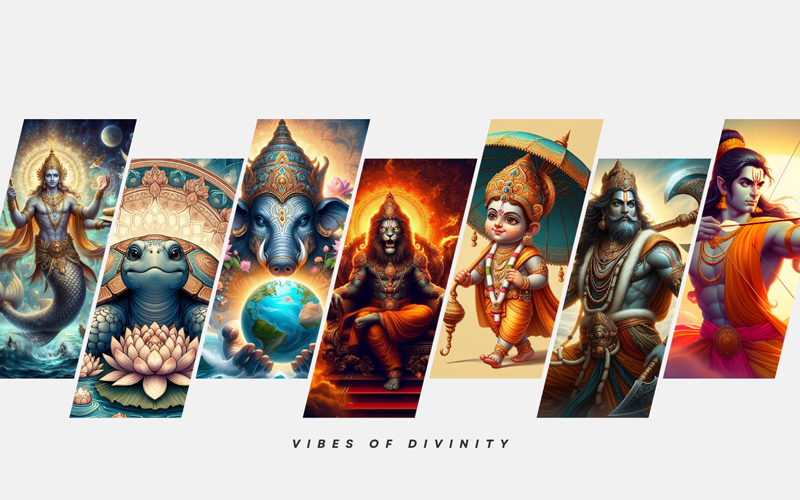Physical Address
Empirical System, 105 First Floor Pitru Krupa, Opp. R.K. Desai College, Koparli Road, Vapi (Gujarat) 396 191
Physical Address
Empirical System, 105 First Floor Pitru Krupa, Opp. R.K. Desai College, Koparli Road, Vapi (Gujarat) 396 191

In Hinduism, Lord Vishnu—the preserver—is believed to have descended to Earth in various forms known as avatars. These avatars, or incarnations, serve to restore balance and uphold righteousness in the universe. Let’s explore the ten principal avatars of Lord Vishnu, known as the Dashavatara.
First, we have Matsya, the fish avatar, who rescued the sage Manu from a great deluge.
Next is Kurma, the turtle avatar, who aided in the churning of the ocean to obtain the nectar of immortality.
Then comes Varaha, the boar avatar, who lifted the Earth from the cosmic ocean, saving it from the demon Hiranyaksha.
Narasimha, the lion-man avatar, appeared to defeat the tyrant Hiranyakashipu and protect his devoted follower, Prahlada.
Vamana, the dwarf avatar, humbled the arrogant demon king Bali by covering the universe in just three steps.
Parashurama, the warrior-sage avatar, wielded his axe to rid the world of corrupt Kshatriya rulers.
Rama, the prince of Ayodhya, exemplified righteousness and defeated the demon king Ravana.
Krishna, the divine cowherd, played a central role in the epic Mahabharata, guiding Prince Arjuna and imparting the spiritual wisdom of the Bhagavad Gita.
Buddha, according to some traditions, is considered an avatar of Vishnu who taught compassion and the path to enlightenment.
Finally, Kalki, the prophesied avatar, is yet to appear. He is destined to arrive at the end of the Kali Yuga to restore righteousness and usher in a new era.
These are the ten principal avatars of Lord Vishnu, each representing different aspects of divinity and cosmic order.